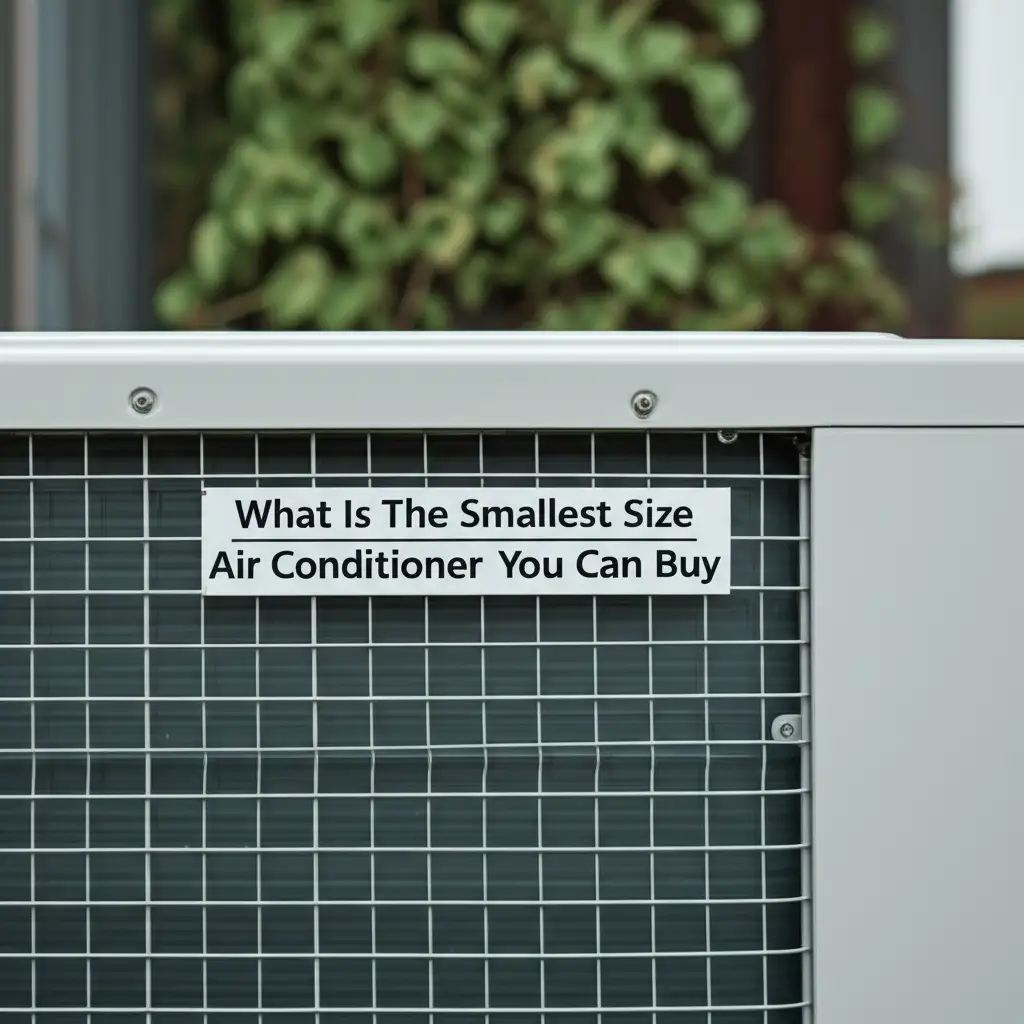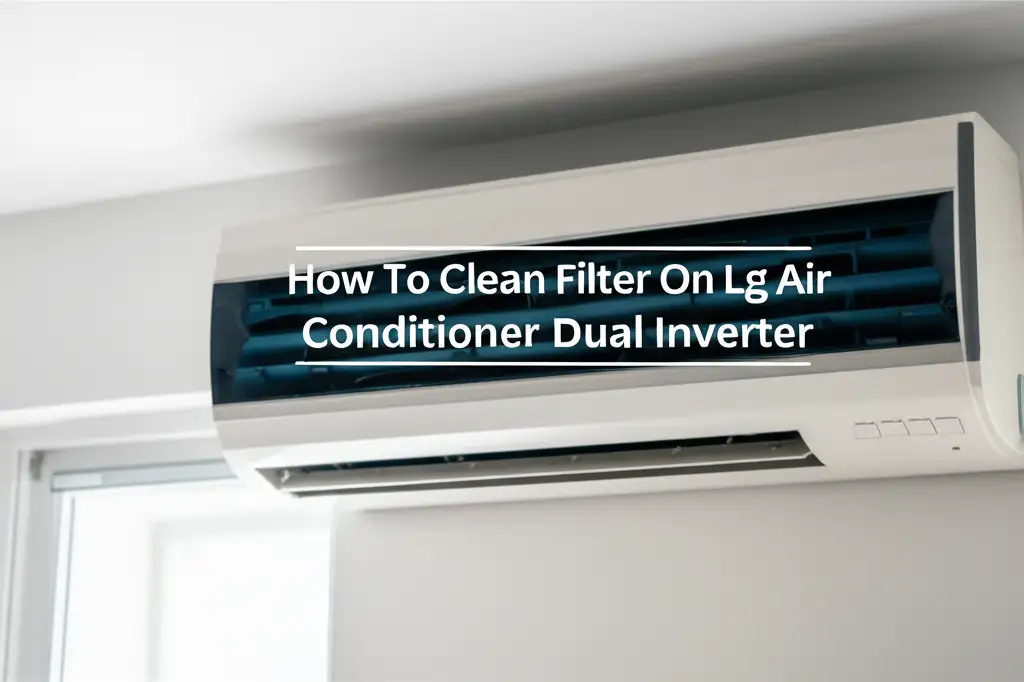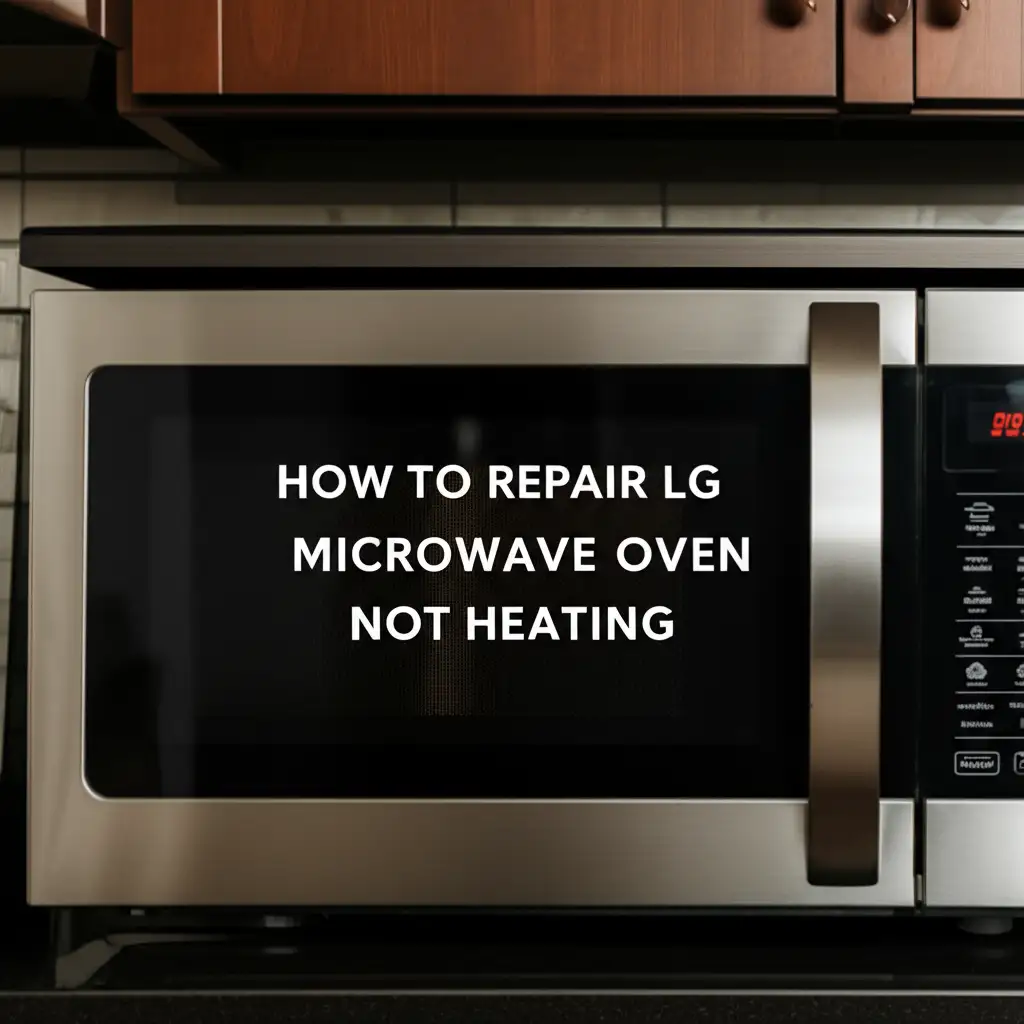· Katria Melrose · Home Appliances · 20 min read
What Is The Smallest Size Air Conditioner You Can Buy

Discovering the Smallest Size Air Conditioner for Your Space
Summer heat arrives each year. Staying cool becomes a priority. Many people live in small apartments, tiny offices, or specific zones within a larger home. A large, powerful air conditioner does not fit these spaces. I often hear people ask, “What is the smallest size air conditioner I can buy?” This question makes sense. Finding the right compact cooling solution is important for comfort and efficiency.
This article explores the world of small air conditioners. We will look at different types, their cooling capacities, and how they suit various small spaces. I will guide you through understanding BTU ratings. This helps you select the perfect small AC unit. We will also discuss the benefits and considerations for each type. By the end, you will know how to pick the ideal small air conditioner for your cooling needs.
Takeaway
Choosing the smallest air conditioner depends on your space and cooling needs.
- BTU Rating is Key: Match the unit’s British Thermal Unit (BTU) to the room size.
- Consider Unit Type: Options range from personal desktop coolers to small window units and portable models.
- Prioritize Efficiency: Look for Energy Star ratings even in smaller units.
- Measure Your Space: Accurate room dimensions prevent over or under-cooling.
The smallest air conditioner available is typically a personal desktop cooler, often rated around 1000-2000 BTUs. For more substantial room cooling, a compact window unit or portable AC can start as low as 5000 BTUs. These units provide focused relief for individual use or small enclosed areas like a personal office or a small bedroom.
Understanding Small Air Conditioner Units and BTU Ratings
When we talk about the “smallest” air conditioner, we address two main things: physical size and cooling capacity. A unit can be physically small but still offer good cooling. This cooling power is measured in British Thermal Units (BTUs). A higher BTU number means more cooling power. The smallest units often have the lowest BTU ratings.
A personal space cooler might have 1,000 to 2,000 BTUs. These devices cool only a very small area. Think of them cooling the space right around your desk. A small window air conditioner often starts at 5,000 BTUs. This size can cool a small bedroom or office effectively. Knowing the BTU rating helps you avoid buying an AC unit that is too weak or too strong for your room. An undersized unit will run constantly and not cool enough. An oversized unit cycles on and off too often, leading to wasted energy and humidity issues.
It is simple to match BTUs to room size. For example, a 5,000 BTU unit cools about 150 square feet. A 6,000 BTU unit cools up to 250 square feet. This relationship helps you find the smallest effective unit. My advice is always to measure your room before looking at units. You can learn more about how to choose the right size air conditioner for your home by checking out our guide. This initial step prevents discomfort and saves energy.
Types of Small Air Conditioners
The market offers several types of small air conditioners. Each type suits different needs. I will explain the common options.
- Window Air Conditioners: These units fit directly into a window frame. They are very common for single rooms.
- Portable Air Conditioners: These units sit on the floor. They move easily from room to room.
- Ductless Mini-Split Systems: These units offer quiet, efficient cooling for specific zones. They are more permanent than window or portable units.
- Personal Space Coolers: These are the smallest. They cool only a very localized area. They are often battery-powered or plug into a USB port.
Each type has pros and cons. We will discuss each type in more detail. This helps you find the smallest air conditioner that meets your specific requirements.
Window Air Conditioners: Compact Cooling Power
Window air conditioners are a popular choice for cooling single rooms. They are widely available in small sizes. Many manufacturers offer units as small as 5,000 BTUs. These 5,000 BTU units are often the smallest window air conditioners you can buy. They are designed for small bedrooms, home offices, or studio apartments. These units fit into standard windows. They are relatively easy to install.
One benefit of window units is their efficiency. They vent hot air directly outside. This means they do not need ducts or separate exhaust hoses inside the room, unlike portable units. They also tend to be more energy-efficient than portable models with similar BTU ratings. The smallest window units are usually compact. They do not take up much floor space. This is a big plus for small rooms. For instance, my small office benefits from a 5,000 BTU window AC. It keeps the room comfortable without blocking walkways.
When considering a window unit, measure your window opening. This ensures the unit fits properly. You also need to consider noise levels. Some smaller units can be surprisingly quiet. We have a great resource on what is the quietest window air conditioner you can buy if noise is a concern. Remember to check for Energy Star ratings. This helps you save on electricity bills. These compact units are excellent for focused cooling.
Sizing a Window Air Conditioner for Small Spaces
Choosing the right size window air conditioner is very important. Even for the smallest spaces, you must match the BTU rating to the room size. Too small a unit will struggle to cool the room. It will run constantly, wasting energy and not reaching your desired temperature. Too large a unit will cool the room too quickly. This causes it to cycle on and off often. This short-cycling wastes energy and leaves the air feeling damp. It does not dehumidify properly.
For typical small rooms:
- 100-150 sq ft: A 5,000 BTU unit is usually sufficient. This is common for a small bedroom or a tight office space.
- 150-250 sq ft: A 6,000 BTU unit works well. This covers slightly larger small rooms or those with more sun exposure.
Always measure the square footage of your room. Multiply the room’s length by its width. Consider factors like direct sunlight. A room with heavy sun exposure might need 10% more BTUs. If the room is a kitchen, add 4,000 BTUs. This accounts for heat from cooking appliances. You can find more detailed information on how to figure out what size window air conditioner you need. Getting the size right ensures comfort and energy savings for your small space.
Portable Air Conditioners: Mobility for Small Rooms
Portable air conditioners offer flexibility. They are not fixed in a window. You can move them from room to room. This makes them ideal for temporary cooling needs. Small portable units start at around 5,000 to 6,000 BTUs. These are suitable for small bedrooms, dens, or small office spaces. They usually come with an exhaust hose that you vent out a window. This hose removes hot air from the room.
The main advantage of a portable unit is its mobility. If you only need cooling in one room during the day and another at night, a portable unit can work. I find this useful for guest rooms that are not always occupied. You can store the unit away when not needed. They are also a good option if window installation is not possible. For instance, if you live in a rental with strict rules about window units.
However, portable units generally have some drawbacks compared to window units. They can be less energy-efficient for the same BTU rating. This is partly because the unit itself is inside the room. It generates some heat. The exhaust hose also needs to be properly sealed in the window. If not, outside air can leak back in. They also take up floor space. Even the smallest portable units will occupy a corner of your room. You should consider this for very cramped areas.
Essential Features of Small Portable AC Units
When selecting a small portable air conditioner, several features enhance usability and performance. These features help you get the most out of your compact cooling solution.
- Built-in Dehumidifier: Many portable AC units offer a dehumidifier function. This is helpful in humid climates. It makes the air feel cooler and more comfortable, even if the temperature does not drop significantly.
- Programmable Timer: A timer lets you set the unit to turn on or off at specific times. You can cool your room before you arrive home. You can also turn it off after you fall asleep. This saves energy.
- Sleep Mode: This mode adjusts the temperature during the night. It also runs the fan at a lower speed. This makes the unit quieter. It also helps conserve energy while you sleep.
- Remote Control: A remote control offers convenience. You can adjust settings from across the room.
- Easy-to-Clean Filter: Air filters need regular cleaning. This keeps the unit running efficiently and improves air quality. Look for filters that are easy to remove and wash. We have guides on how to clean your air conditioner filter which can be helpful.
Considering these features helps you find a small portable AC that not only cools but also offers convenience and better air quality.
Ductless Mini-Splits: Efficient Small Space Solutions
Ductless mini-split systems offer a more permanent and efficient cooling solution for small spaces. Unlike window or portable units, mini-splits consist of two main parts: an outdoor compressor/condenser and an indoor air-handling unit. A conduit connects these two parts. This conduit houses the refrigerant line, power cable, and condensate drain. These units are typically mounted high on a wall. They do not block windows or take up floor space.
Mini-splits are available in smaller BTU capacities suitable for single rooms, starting around 9,000 BTUs. While 9,000 BTUs might seem higher than the 5,000 BTU window units, mini-splits are significantly more efficient. They deliver superior cooling and heating (many are heat pumps) for their energy consumption. Their efficiency comes from their design. They do not lose air through ducts like central air systems. They also offer precise temperature control for individual zones.
The main benefits include quiet operation and high energy efficiency. The noisiest part, the compressor, is outside. This makes the indoor unit very quiet. I personally appreciate how quiet my mini-split is compared to my old window unit. They are also great for specific small areas. Think of a garage apartment, a detached office, or an addition to your home that lacks ductwork. Installation does require a professional. This makes the initial cost higher than a window or portable unit. However, the long-term energy savings can offset this cost.
Benefits of Mini-Splits for Compact Living
Ductless mini-splits bring specific advantages to compact living situations. Their design makes them a smart choice for small homes or designated zones.
- Zone Control: Mini-splits allow you to cool specific areas of your home. You do not need to cool the entire house. This is ideal for a studio apartment where you only need one unit. Or perhaps for a single bedroom in a larger home. This saves a lot of energy. You only cool where you need it.
- High Energy Efficiency: These units operate very efficiently. They often carry high SEER (Seasonal Energy Efficiency Ratio) ratings. Higher SEER means lower electricity bills. This makes them cost-effective over time.
- Quiet Operation: As mentioned, the outdoor unit houses the compressor. This results in very quiet indoor operation. This is a significant comfort factor, especially in bedrooms or quiet work areas.
- Improved Air Quality: Mini-splits often include advanced filtration systems. These filters can capture dust, allergens, and other particles. This results in cleaner indoor air.
- Versatility: Many mini-split units offer both cooling and heating functions. They serve as heat pumps. This means they can be your primary climate control system year-round. This reduces the need for separate heating solutions.
While the initial installation cost is higher, the long-term benefits in comfort, efficiency, and air quality make mini-splits an excellent choice for compact living. For those considering cooling an entire small house, understanding what is the best size air conditioner for my house can provide a broader perspective on sizing considerations beyond just mini-splits.
Personal Space Coolers: Micro-Sized Comfort
When you are looking for the absolute smallest air conditioner, personal space coolers are the answer. These are not true air conditioners in the traditional sense. They do not use refrigerant to cool the air. Instead, they operate on evaporative cooling principles. They pull warm air over a water-soaked pad or filter. The water evaporates, absorbing heat from the air. This cools the air that blows out. They are often called “evaporative coolers” or “desktop air coolers.”
These devices are incredibly compact. Many are no larger than a shoebox. Some are even smaller, fitting on a nightstand or desk. They are powered by USB or a small wall adapter. Their cooling capacity is minimal. They are designed to cool only the immediate area around you. This means they are perfect for a single person sitting at a desk, sleeping in bed, or working in a small, stuffy corner. They are not meant to cool an entire room. For example, I use one on my desk in the summer. It provides a nice, cool breeze directly on me, making a hot room bearable.
Personal space coolers are the cheapest to buy and operate. They use very little electricity. They also require very little maintenance beyond refilling the water reservoir and occasionally cleaning or replacing the cooling pad. They are silent compared to any other AC type. They are a good solution if you need a quick, focused cool breeze and do not want to invest in a larger unit.
Considerations for Personal Coolers
While personal space coolers are the smallest option, they have limitations. It is important to understand these before buying one.
- Limited Cooling Power: They are not designed to lower the room temperature. They only create a localized cool zone. If your goal is to cool an entire small room, these will not work.
- Humidity Impact: Evaporative coolers add moisture to the air. In very humid climates, this can make the air feel muggier instead of cooler. They work best in dry climates where the air can absorb more moisture.
- Water Refill: You must regularly refill the water reservoir. The frequency depends on the unit’s size and how long it runs. Some small units may need refilling every few hours.
- Maintenance: While simple, you must clean the water reservoir and replace the cooling pad periodically. If not, mold or mildew can grow, which is unhealthy. We have general advice on how to clean an air conditioner that can apply to keeping these smaller units hygienic.
- Portability vs. Power: Their small size makes them highly portable. You can take them almost anywhere with a power source. However, this portability comes with very limited cooling ability compared to even a small window or portable AC.
These devices are best seen as personal comfort enhancers. They are not a substitute for a full air conditioning system for a room.
Matching Small AC Size to Your Space: Why BTU Matters Most
Choosing the smallest air conditioner for your space means prioritizing the BTU rating. This is the single most critical factor. BTUs represent the cooling capacity. If the BTU is too low for your room, the unit will struggle. It will run continuously without reaching the desired temperature. This wastes energy and leaves you feeling hot. If the BTU is too high, the unit will “short cycle.” It turns on, quickly cools the room, and then turns off. This leads to poor dehumidification. The room will feel clammy and uncomfortable.
My experience shows that people often guess the size they need. This often leads to problems. Take accurate measurements of your room. Measure the length and width of the room in feet. Multiply these two numbers to get the square footage. Use this square footage to guide your BTU selection. The general rule of thumb is 20 BTUs per square foot. So, a 100 sq ft room needs about 2,000 BTUs. A 250 sq ft room needs about 5,000 BTUs.
Remember to consider specific factors. A room with many windows or direct sunlight might need 10% more BTUs. Rooms with high ceilings (over 8 feet) also need more cooling power. Kitchens generate a lot of heat. They need an additional 4,000 BTUs added to the calculation. For example, a 150 sq ft kitchen would need 3,000 BTUs (150 sq ft x 20 BTU/sq ft) plus 4,000 BTUs for the kitchen, totaling 7,000 BTUs. It is important to know how to figure out what size central air conditioner you need for larger homes, but for small spaces, these room-specific calculations are crucial.
Factors Influencing BTU Needs for Small Spaces
Beyond square footage, several factors influence the specific BTU requirements for a small space. Understanding these helps you fine-tune your choice for the smallest, most efficient air conditioner.
- Sunlight Exposure: Rooms facing south or west receive more direct sunlight. This adds heat. These rooms need about 10% more cooling capacity. Consider this when choosing your smallest unit.
- Insulation Quality: A well-insulated room retains cool air better. A poorly insulated room loses cool air quickly. Poor insulation means you might need a slightly higher BTU unit. Or the smallest unit might struggle.
- Number of Occupants: Each person in a room generates body heat. A room with more people will need more cooling. For a small office with two people, you might upgrade from a 5,000 BTU to a 6,000 BTU unit.
- Heat-Generating Appliances: Computers, TVs, lamps, and especially kitchen appliances all produce heat. If your small space has many such devices, account for this added heat. A small server closet, for example, needs more cooling than a similarly sized bedroom.
- Local Climate: If you live in a very hot and humid climate, you might err on the side of slightly more BTUs. Or at least ensure your unit has good dehumidification capabilities. Conversely, a mild climate might allow for a smaller unit.
Considering all these elements ensures your chosen smallest air conditioner cools your space effectively and efficiently. It avoids discomfort and wasted energy. You can also explore general guidance on how to choose the right size air conditioner for your home to broaden your understanding.
Installation and Maintenance for Small AC Units
Even the smallest air conditioner needs proper installation and regular maintenance. Correct installation ensures the unit works efficiently. Maintenance keeps it running well for years. For window units, ensure a tight seal around the window. This prevents air leaks. Use the provided side panels and foam insulation. Hot outside air leaking in reduces the unit’s effectiveness. It forces the unit to work harder.
Portable AC units require their exhaust hose to be vented correctly. Use the window kit to create a tight seal. Hot air must go outside, not back into the room. If the hose is too long or has too many bends, it reduces efficiency. Position the unit to allow good airflow around it. Do not block the air intake or exhaust vents. For ductless mini-splits, professional installation is crucial. This ensures proper sizing, refrigerant lines, and electrical connections. A professional ensures the unit works safely and efficiently.
Regular cleaning is vital for all AC types. I always clean my AC filters every few weeks during cooling season. Dirty filters restrict airflow. This reduces cooling efficiency and increases energy consumption. It can also lead to mold growth. Many filters are washable. Simply rinse them with warm, soapy water. Let them dry completely before putting them back. For window and portable units, clean the coils if they look dusty. You can find detailed instructions on how to clean an air conditioner unit or how to clean a portable air conditioner.
Maintaining Optimal Performance of Your Small AC
Maintaining your small air conditioner ensures it continues to provide efficient cooling. This also extends its lifespan. My routine involves several simple steps.
- Clean or Replace Air Filters Regularly: This is the most important maintenance step. Dirty filters block airflow. They force the unit to work harder. Clean washable filters every 2-4 weeks during heavy use. Replace disposable filters as recommended by the manufacturer. Our guide on how to clean an air conditioner filter offers specific advice.
- Keep Coils Clean: Over time, dirt and dust accumulate on the evaporator and condenser coils. This reduces the unit’s ability to transfer heat. Gently brush away loose debris. Use a coil cleaner spray for stubborn dirt. This is particularly important for window units. You can find out more about how to clean air conditioner coils.
- Check for Leaks and Proper Drainage: For portable units, empty the condensate tank regularly. Many units have an auto-shutoff when the tank is full. For window units, ensure the drain holes are clear. Proper drainage prevents water buildup and potential mold growth. Learning how to clean mold from window air conditioner units is important if you notice any issues.
- Clear Obstructions: Ensure no furniture, curtains, or other items block the air intake or exhaust vents. Good airflow is essential for efficient operation.
- Seasonal Storage: If you remove your window or portable unit for the off-season, clean it thoroughly before storage. Store it in a dry, protected area. This prevents dust and damage.
Following these maintenance tips helps your smallest air conditioner run at its best. It keeps your small space cool and comfortable for many summers to come.
FAQs About Smallest Air Conditioners
What is the smallest window air conditioner BTU?
The smallest window air conditioners available typically offer 5,000 BTUs. These units are designed to cool very small rooms, usually around 100 to 150 square feet. They are compact in physical size, making them suitable for small window openings and tight living spaces.
Can a personal space cooler really cool a room?
No, a personal space cooler cannot cool an entire room. These devices use evaporative cooling and are designed for highly localized comfort. They cool only the immediate area around one person. They are best for a desk, bedside table, or specific seating area, not for general room temperature reduction.
How much electricity does a small air conditioner use?
A small air conditioner, like a 5,000 BTU window unit, uses significantly less electricity than larger models. It might consume around 400-500 watts per hour. This translates to low operating costs, especially if it has an Energy Star rating. Personal space coolers use even less, often just 10-20 watts.
Are portable air conditioners less efficient than window units?
Generally, yes, portable air conditioners are often less efficient than window units of comparable BTU ratings. Portable units keep the compressor inside the room, which adds some heat. They also rely on an exhaust hose, which can be inefficient if not properly sealed. Window units vent heat directly outside.
What maintenance does the smallest AC unit need?
The smallest AC units, like personal space coolers, require simple maintenance. This includes refilling the water reservoir regularly and cleaning or replacing the cooling pad to prevent mold. For small window or portable units, regular filter cleaning is crucial for optimal performance and air quality.
Is a mini-split system the smallest type of air conditioner?
No, a mini-split system is not the physically smallest type of air conditioner. Personal space coolers are the smallest. However, mini-splits are the smallest type of permanently installed and highly efficient air conditioning system that can effectively cool an entire small room or zone, starting around 9,000 BTUs.
Conclusion
Finding the smallest size air conditioner involves understanding your specific needs and the capabilities of different units. We explored options from ultra-compact personal space coolers to efficient small window units, portable ACs, and even compact ductless mini-splits. The key takeaway is that “smallest” can refer to both physical dimensions and cooling capacity, measured in BTUs. Matching the BTU rating to your room’s square footage and other environmental factors ensures effective and efficient cooling.
I encourage you to measure your space carefully. Consider how you will use the unit. Will it be for personal comfort or to cool a small room? Think about installation options and noise levels. Regular maintenance, such as cleaning filters, will keep your smallest air conditioner running well for many years. Choosing the right compact cooling solution brings comfort to any small living area. Invest wisely, and enjoy a cooler, more comfortable summer.





